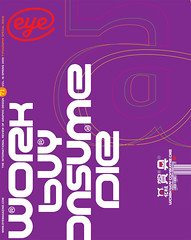Spring 2009
Don’t dictate! Nudge
Nudge: Improving Decisions About Health, Wealth, and Happiness
By Richard H. Thaler and Cass R. Sunstein<br>Yale University Press, $26, £18<br>Human beings, as Nudge reminds us, are weak in the face of life-affecting decisions. We don’t read the small print. We choose instant gratification over delayed reward. We smoke, drink too much, eat the wrong food. In short, we are subject to cognitive biases so numerous and deeply ingrained it is a wonder we are capable of rational thought at all.
Being behavioural economists, the authors of Nudge accept this, and identify a new discipline – ‘choice architecture’. The choice architect designs the framework within which we make decisions, and can thus greatly affect what and how wisely we choose. The idea that factors invisible to traditional economics, such as the order or the way in which options are presented to us, can affect our decision-making should not be news to designers. But Nudge takes this beyond everyday consumer choices, to less frequent and more important decisions, such as choosing a pension plan or a school.
Take Britain’s National Health Service, where patients are being given the right to choose how, when and where they receive treatment. A choice architect would ensure that their choices are presented clearly, with well designed supporting information to help comparison.
Another ingenious and subtle example of choice architecture is a Chicago City initiative to reduce dangerous driving by means of new road markings. Instead of the usual directives to ‘drive safely’ or ‘slow down’, stripes spaced along the road give drivers a false impression of acceleration. Subconsciously, they compensate by slowing down to a safer speed.
Nudge is important because it exhibits a new-found appreciation of human factors in the fields of economics and policy-making. These are the very same human factors that most designers deal with on a daily basis, and the book should nudge us to meet policy-makers and lend our expertise to help create more effective choice architectures.
First published in Eye no. 71 vol. 18 2009
Eye is the world’s most beautiful and collectable graphic design journal, published quarterly for professional designers, students and anyone interested in critical, informed writing about graphic design and visual culture. It is available from all good design bookshops and online at the Eye shop, where you can buy subscriptions and single issues.

